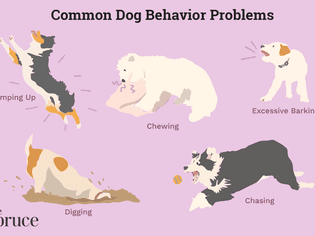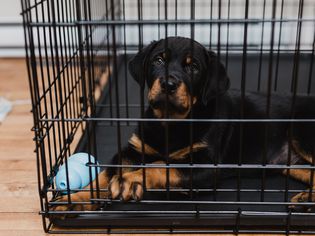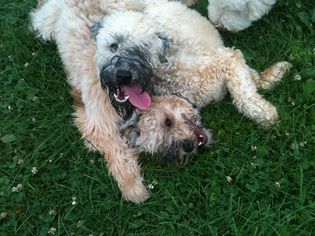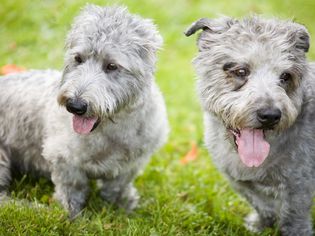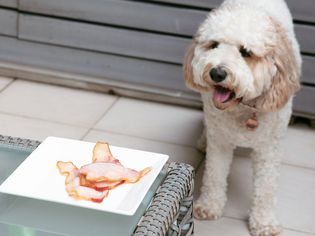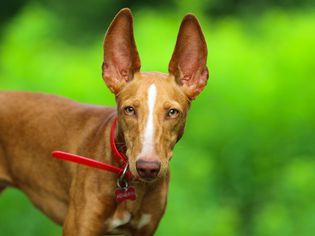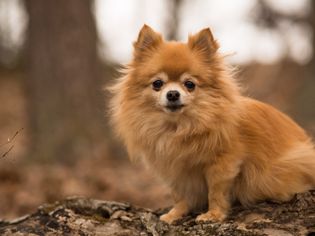The cane corso (pronounced "KAH-Nay KOR-So") is a large and muscular working dog with a noble, confident disposition and a lineage that goes back to ancient Rome. Cani corsi are powerful dogs with a fearless, vigilant nature.
Because of their size and need for training and enrichment, they're not right for everyone. However, these gentle giants are often misunderstood and can actually make excellent companions. For those who like the idea of a very large dog who is protective and athletic, the cane corso is one to consider.
Learn about the cane corso’s history, temperament, care needs, and more.
Breed Overview
- GROUP: Working
- HEIGHT: 23.5 to 27.5 inches
- WEIGHT: 80 to 120 pounds
- COAT: Short and coarse
- COAT COLOR: Black, gray, fawn, and red; brindle is possible in all colors, may have black or gray mask, and may have small patches of white
- LIFE SPAN: 10 to 12 years
- TEMPERAMENT: Reserved, quiet, gentle, calm, stable, even-tempered
- HYPOALLERGENIC: No
- ORIGIN: Italy
Characteristics of the Cane Corso
Despite their intense and muscular appearance, which some might find intimidating, cani corsi can be affectionate and gentle. They bond deeply with their families and act as protectors. With proper handling and socialization, the cane corso can get along well with children, even forming a close bond.
A cane corso can weigh up to 120 pounds, so children should learn how to behave around dogs and never be left unsupervised. Even when they're gentle, cani corsi are still supremely large and can accidentally knock over people and furniture.
Cani corsi bark a normal amount, but their size produces a thunderous noise that can endanger your quality of life. You can teach your dog to stop barking, but make sure you never punish them.
| Affection Level | High |
| Friendliness | Medium |
| Kid-Friendly | Low |
| Pet-Friendly | Medium |
| Exercise Needs | High |
| Playfulness | Low |
| Energy Level | Medium |
| Trainability | High |
| Intelligence | Medium |
| Tendency to Bark | Medium |
| Amount of Shedding | Medium |
History of the Cane Corso
The cane corso originated in Italy and can be traced back to ancient times. The molossus, a now extinct mastiff-type dog, is an ancestor of the cane corso and similar mastiff-type dogs, according to the American Kennel Club.
Throughout their early history, the cane corso acted as a guard dog, war dog, and skilled hunter of various game (including very large game). The breed's name is derived from the Italian word for dog, cane, and the Latin term cohors, which means protector.
World Wars I and II caused a significant decline in the cane corso population, but small numbers of the dogs still existed. During the 1970s, cane corso enthusiasts sparked a revival. The first cane corso dogs arrived in the U.S. in 1988. The AKC admitted the breed to the Working Group in 2010.
Cane Corso Care
Exercise and training are most important to a cane corso, and, happily, grooming requirements are basic. These dogs do best when they have plenty of space to move around and play.
A cane corso needs a sturdy, high fence when allowed outdoors. The breed has a high prey drive and is prone to chasing and killing small animals. They are territorial and will patrol the fence line, protecting the property from passersby.
Exercise
A true working breed, the cane corso is active and driven. Daily exercise will help keep the cane corso physically and mentally fit. Brisk walking or jogging for at least a mile is a good start, so plan on spending a minimum of 30 minutes a day exercising together.
If you are up for it, even longer walks or jogs a few times per week are good for both you and your pet. You can also provide exercise by throwing a ball or Frisbee for fetch; many dogs will happily spend quite a bit of time in pursuit of their ball.
It's important to not run on concrete for long distances until your dog is fully grown, which can take up to two years for a giant dog like the cane corso. Joint damage can occur if exercise is too intense while the pup is growing. Training leash manners, basic cues, and working out on grass will be best while your pup grows.
If you don't have a job for a cane corso to do, they might find their own and end up digging holes and chewing your belongings. The old expression "a tired dog is a good dog" is quite true for the cane corso. If you have a farm, the dog can herd livestock. If you own a business, have your dog greet customers. But if you are a more typical homeowner, spend time each day with a dog sport, learning tricks, or practicing obedience skills.
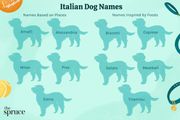
Grooming
The cane corso has a short, coarse double coat. The length of the undercoat depends on where the dog lives; dogs in colder climates will have thicker and longer undercoats than dogs in mild climates.
Like other breeds with double coats, the cane corso will shed a fair amount throughout the year, but they'll shed more heavily in the spring. Still, the grooming needs of these dogs are basic—just a weekly brushing throughout the year with additional grooming sessions during the shedding season.
Baths can occur on an as-needed basis. This is not a breed that needs fancy haircuts or trims. Just be sure to check their ears often to look for signs of infection, ranging from odor to discharge, that would need veterinary treatment.
Like other large dogs, the cane corso's nails might wear down naturally, especially if the dog walks frequently on pavement or other rough surfaces. However, occasional nail trims may be necessary. Check the length of your dog's nails on a regular basis so they can remain comfortable and mobile.
Some cane corso parents will elect to crop their dogs' ears or dock their tails. Both procedures—which are purely cosmetic—can be painful for dogs. They're even banned in some countries.
Training
Proper training and socialization are essential for all dogs, but especially for large breeds like the cane corso. Start your training when the dog is a young puppy. You should socialize them frequently with other dogs, cats if they live in your home, children, strangers, and extended family members. Always keep an eye on the dog when meeting new animals or people, and be sure to have your dog on a leash so you can control them if necessary.
With a natural aversion to strangers and a tendency to be territorial, you must be diligent and consistent while training a cane corso. This is also crucial because of the dog's giant size so careful attention should be placed upon prevention of jumping, leaning, and leash-pulling. Your dog could easily knock someone over if they jumped up on them or yanked on the leash during a walk.
The cane corso is intelligent and hard-working, so it should not be difficult for this breed to learn. They have a natural desire to please their owners and respond very well to positive reinforcement such as praise, attention, and affection.
Harsh training tactics will harm the bond with your dog and may cause fear-based aggression that is very dangerous in a dog of this size and power. Positive training methods like clicker training will be much more successful at making this dog a well-behaved giant.
Common Health Problems
Responsible breeders strive to maintain the highest breed standards as established by kennel clubs like the AKC. They screen their breeding dogs for common health conditions, and you should ask for proof of this screening before purchasing any purebred dog.
However, some hereditary health problems can occur in cani corsi. Be aware of the following conditions:
- Hip dysplasia: This is an inherited condition that can lead to lameness and arthritis. It's especially common in large or giant breeds of dog.
- Gastric dilatation-volvulus: Bloating after eating and drinking too fast is possible. If the stomach twists, it can cut off the blood supply and create a medical emergency. This painful and potentially fatal condition is also most common in large breeds of dog like the cane corso.
- Ectropion: This is a common condition in which the eyelids roll inwards, causing the lashes to rub against the dog's eyeball. It is painful and can damage the eye. Any dog can have the condition, but it is more common in giant breeds.
- Seizures: The Cane Corso Association of America warns corsi owners to look out for idiopathic epilepsy, which causes seizures. This form of epilepsy can affect cani corsi early in their lives, from ages 2 to 5.
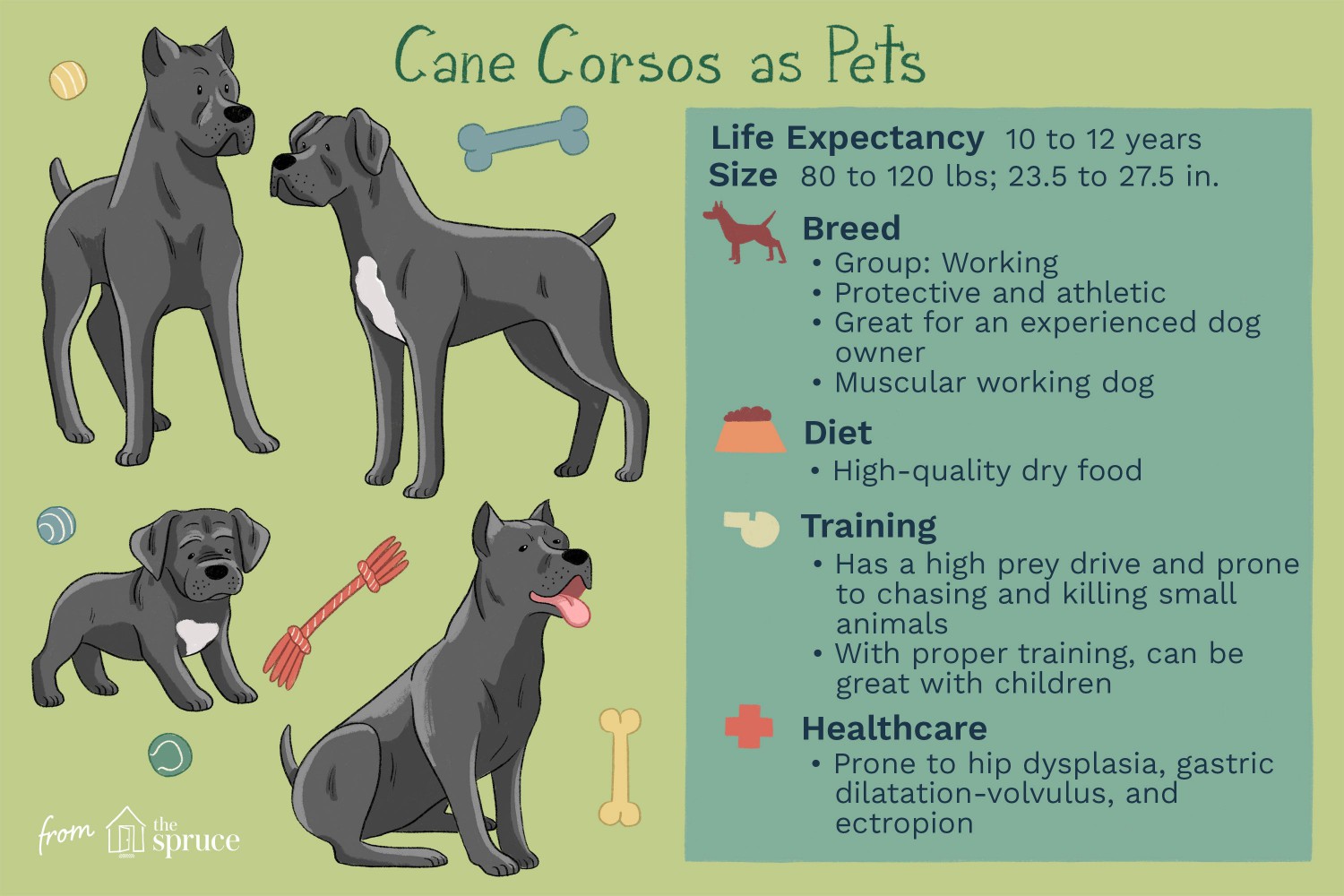
The Spruce / Kelly Miller
Diet and Nutrition
It's critical that a cane corso receives the appropriate amount and type of food as they grow. Overfeeding or inappropriate diets can cause significant and painful growth problems in the development of bones in giant breeds.
For example, some puppy diets are actually too high in calcium for giant breed dogs. They're extremely sensitive to too much or too little calcium while their bones are growing. They need to hit specific ratios of minerals such as calcium and phosphorus for optimal bone growth. Using puppy food designated for a large or giant breed puppy will help avoid these issues.
The amount of food your adult cane corso will need daily depends on the type of food. Generally, feed your dog a high-quality large or giant breed adult dog food.
Due to the potential link between grain-free foods and heart issues, most veterinarians advise feeding a diet that is not grain free. Your veterinarian is a great source for recommendations on appropriate type and amount of food to feed your adult or growing cane corso.
It's best to divide the dog's food into at least two meals a day to help reduce the risk of bloating and stomach torsion. Be sure to assess whether your dog is getting overweight. If you note weight gain, ask your veterinarian whether you need to change the feeding schedule, amount, type of food, and exercise routine. And while treats are an enjoyable way to reward your dog, be sure that treats only make up a small percentage of your dog's daily calorie intake.
Where to Adopt or Buy a Cane Corso
A cane corseo puppy will cost around $1,500, but the cost can skyrocket to thousands more for a pedigreed cane corso pup.
If you think a cane corso could be right for you, try to locate cane corso breeders and owners in your area so you can spend some time with the breed first. Make sure you understand what is necessary to properly care for this breed before you bring one into your life. Begin your search through the Cane Corso Association of America.
Consider searching for a cane corso rescue group. Check with your local animal shelter and rescue groups to see if there's a cane corso available for adoption. Large- and giant-breed rescue groups such as Big Dogs Huge Paws Inc. or Cane Corso Rescue may have cani corsi available to adopt.
Cane Corso Overview
The cane corso is a big dog that requires a lot of care, space, and attention. There are many things to consider, from the dog’s size to their training needs, before you bring one home.
Pros of the Cane Corso
- Forms a close bond with family members
- Makes a good watchdog
- An easy-to-maintain coat that doesn't need much grooming
Cons of the Cane Corso
- Needs significant exercise and obedience training
- At risk for joint problems and hip dysplasia, due to size
- Larger-than-average size can be difficult for small people and children to handle
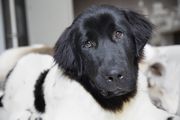
More Dog Breeds and Further Research
If you’re interested in similar breeds, look to these to compare the pros and cons:
- Mastiff
- Bullmastiff
- Dogue de Bordeaux
There’s a whole world of potential dog breeds out there. With a little research, you can find the right one to bring home.
- Is a cane corso a good dog for a first-time owner?
No, a cane corso is not a good breed for first-time dog owners because they require so much training, enrichment, and money. A cane corso is best adopted by a person who is familiar with dog training and able to offer enough exercise and socialization. This breed can also act indifferent to most people, which can worry first-time dog owners. Unfortunately, first-time dog owners give up this breed for failure to properly train and socialize them—thankfully, there are plenty of other options.
Is a cane corso aggressive?A cane corso looks like they could be aggressive, but they're not when they're socialized correctly. However, they do have an assertive personality, especially when intruders invade their property. They can even be more aggressive than pit bulls because of their instinct to protect and their prey drive. Proper training helps this breed understand when something is truly dangerous to their territory.
Is this breed banned in the United States?Cani corsi are banned in some cities and towns around the country, subject to breed-specific legislation. If you are moving to a new state, city, or apartment complex, you must find out if you are allowed to have a cane corso as a pet.

